Hello friends! Welcome back to Unmetal Monthly, where we've got a doozy of a column for you this time around. I can't begin to sing the praises of our writers enough, especially our newest contributor JD, for bringing us a wide-ranging view of all the beauty and grime that exists in the musical underground. This month, we cover everything from experimental trap punk to zeuhl to dungeon synth to death rock and back again. Get ready for a wild one.
-Calder Dougherty

Top of the Pops
Vantana Row - FAT_ASS_PUSSY (experimental, electronic, noise, crust, trap, “trapunk”)
Vantana Row consists of married couple Volly and Jamey Blaze. They have lived out of their van since 2015 and have gained underground notoriety for their “drive-by” guerilla live shows in which they pull up to a crowded area and then slide open their van door to reveal Jamey ready behind his drum kit next to a giant speaker while Volly climbs on top of the van with a microphone in hand. The next time you are in line waiting for Ja Rule to perform, don’t be surprised when Vantana Row rolls up to dislodge your eardrums.
Volly and Jamey refer to their particular style as “trapunk”, but that term does not even begin to encompass their sound, which is a frenzied combination of trap music, noise, electronic music, and metal all under the umbrella of a DIY crust punk ethos. These influences are often combined seamlessly with Volly scream-rapping over distorted samples and broken synths while Jamey alternates between bouncing grooves and complex fill-based patterns with heavy use of double-bass drums. All of this usually occurs within the space of a one-minute-long song. But what makes their music even more difficult to categorize is the fact that each of their releases leans into different aspects of their sound. So, while 2017’s 4ourIVer leans heavily into their trap and general hip-hop influences, one could argue that FAT_ASS_PUSSY leans more heavily into the noise influence.
Most of the tracks off FAT_ASS_PUSSY are songs that seem to have been re-recorded or remixed from other Vantana Row releases, but the musical thread that ties most of them together is that this collection seems to filter all the songs through a degraded, distorted speaker well past its expiration date. Tracks such as “Did Somebody Just Call It a Whole Damn Space Suit” and “One Hand, One Gat, Two Teeth” especially showcase this blown-out approach to production. The latter contains a warped metallic sound that could be compared to a dog bark pitch-shifted to demonically low levels. That sound encompasses so much of the aural space that it buries everything else except Jamey’s hard hits on the crash cymbal and bass drum that only serve to punctuate the aforementioned sound.
“Fiver” is an album highlight that illustrates the band’s spectrum of far-reaching influences. The song starts with an impenetrably distorted but straightforward drum pattern but quickly opens up to a buoyant broken-synth melody that would not be out of place on a 90s Aphex Twin release. That melody gradually turns into a bouncy electro-groove before slowing down and ending with what can only be described as a heavily distorted hardcore breakdown without guitars.
While Vantana Row very well may be an acquired taste, there is simply no band doing anything anywhere close to their alchemy of amalgamated styles. And FAT_ASS_PUSSY is perhaps the most realized documentation of that approach.
-JD

Best of the Rest
PoiL and Junko Ueda - PoiL/Ueda (zeuhl, Japanese folk, avant-prog)
The mere mention of “progressive rock” within metal communities can elicit both strong emotions and draw clear divisions. There are those metal fans and musicians who swear undying loyalty to progressive rock bands such as Rush and Yes while many others excoriate the entire genre as “pretentious” and “cheesy” at best.
However, there is a whole world of avant-garde progressive rock that could very well bridge the aforementioned divisions. Bands of the Rock-In-Opposition (RIO) movement of the late 1970s as well those that perform Zeuhl, a micro-genre coined by Christian Vander of weird-prog juggernauts Magma, laid the foundation by employing the acrobatic musicianship and zaniness of Frank Zappa, the darker, heavier sounds and textures of early King Crimson, and the influence of styles as wide-ranging as jazz, chamber music, and various folk music traditions. Modern bands, such as Japan’s Kōenjihyakkei, America’s Corima, and France’s PoiL have carried the flag of the original RIO and Zeuhl bands into the 21st century.
PoiL is a trio consisting of Antoine Arnera (keyboard, vocals), Boris Cassone (guitar, bass, vocals), and Guilhem Meier (drums, vocals). However, on PoiL/Ueda, they are joined by both Benoit Lecomte (acoustic bass) and Junko Ueda (vocals, satsuma-biwa), and the latter makes up part of the album’s namesake. Ueda is an accomplished performer of traditional Japanese music and her contributions on this album make for an intriguing melding of modern and traditional music as well as an equally satisfying creative endeavor between different cultures.
According to the album’s Bandcamp page, the album is “based on the 13th-century Japanese epic tale ‘Heike-Monogatari’, which is a story that describes the conflict between two rival clans for the control of Japan. Ueda’s rich, winding voice provides the narrative to this saga while PoiL guides the listener through valleys of quiet reflection and mountains of anxious climax.
The album is sequenced into separate movements but plays as one, continuous piece starting with the buildup of “Kujô Shakujô, Pt. 1”, in which Ueda’s resonant voice is at the very center of the performance. Her voice ascends and descends with equal grace as PoiL merely add support with isolated bass punctuations and auxiliary percussion strikes. With “Kujô Shakujô, Pt. 2” and “Kujô Shakujô, Pt. 3” is when PoiL comes together to add a clear tempo and more focused direction to the music. Both aforementioned movements bear strong resemblance to King Crimson’s 80s period with fretless bass slides and twisting polyrhythmic guitar and keyboard patterns.
Despite how complex the music eventually becomes, Ueda’s voice is never lost to the background. Even as “Dan No Ura, Pt. 1” spills over into several layers of barely-controlled chaos during its climax, Ueda’s voice is ever-present throughout the tumult.
That is possibly the most remarkable aspect of PoiL/Ueda, especially considering how polar opposite the musical backgrounds of PoiL and Ueda are: the album succeeds where other collaborative efforts have failed in that all of the performers are given equal presence throughout the entire recording. Considering that these are expert musicians displaying their virtuosity, that was all that was needed to make PoiL/Ueda a triumphant collaboration.
-JD
Tir - Awaiting the Dawn (neofolk, dungeon synth)
I’ll be honest with you - I’m not the world’s biggest dungeon synth fan. It’s also been a while since a dark/neo folk album really captured my attention. But one sure way to do it is to have Thomas Helm (Empyrium) do the vocals for your release; his deep, resonating timbre is really unlike no other. That’s the case with Tir, the project of Australian based Oytun Bektas who does the rest of the instruments. As befits Helm’s unique sound, the album is a likewise deep, fog-drenched, and “green” album, all resounding guitars, which are really the focus of the album, tasteful synths designed to enhance the atmosphere, and plenty of samples of nature.
What this album does well is that it doesn’t hit on the same exact influence or sound at all times; this is what really distances me from both sub-genres it draws on. Instead, as the album progresses, Awaiting the Dawn chooses to highlight different elements and feelings. Opening track “C’est La Fin (Part 1)”, for example, draws deeply on Helm’s vocals to convey a certain melodramatic grandiosity, a keening of death. But “In the Essence of Dying”, still surrounding the same theme, seems to convey a more peaceful outlook on mortality, not a resignation but a wonder at life.
The middle of the album is dedicated to longer tracks which are some of the best pieces of music on it. The runtime allows the guitars and synths more time to articulate their ideas and themes, creating sprawling and entrancing pieces of music, again often joined by Helm’s commanding voice. By making these variations and fully allowing its compositions to blossom, Awaiting the Dawn manages to do what few other albums in these sub-genres have managed to do for me in recent times - not only capture my attention but also maintain it.
-Eden Kupermintz
Forest Bees - Between The Lines (indie pop, noise pop)
Somewhere between the worlds of indie pop and noise pop lives the vibrant house of Forest Bees, a solo project by Bay Area writer and performer Sheetal Singh (formerly of shoegaze band The Stratford 4). In her second full-length album as Forest Bees, Singh explores the impact of identity and existentialism. Between the Lines reflects Singh’s history as both a storyteller and shoegaze singer, exploring the effect of racial categorization on our daily lives. Her intensely feminist lyrics are belied by her soft yet powerful delivery that captures how perceptions of identity impact our lives so profoundly that they almost fade into the background. Hypnotic melodies pull the listener into glimmering songs that pulse with an electric energy. The album is simultaneously airy yet strident, a call for action and hope for a better time.
-Bridget Hughes
Deep Cavity - Cathedral of Tears (death rock, post-punk)
This deathrock/postpunk album has singlehandedly sent me down a deathrock and darkwave wormhole for the last six weeks. The California-based Deep Cavity perfectly blends gothic darkness with 80s weirdness for an utterly addictive, completely danceable album. Glimmers of early Christian Death abound, but personally, Deep Cavity brings back memories of listening to The B-52s. Though vastly different vibes, Cathedral of Tears embodies the same artful zaniness and surprisingly timeless sound of the 80s underground. Only instead of partying on the beach with a rock lobster, Deep Cavity is in a crypt dancing with the goth kids.
-BH